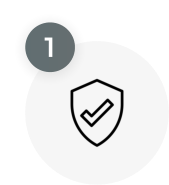2015 is looking to be an even bigger year in the digital world with transparency becoming one of the most important tools in marketing. This year the most successful businesses will be those that will give an accurate and real time picture of what they are doing in the interest of the consumer, at any given time.
In real terms, what this means is sharing content (stories) that is valuable and interesting AND that will benefit the consumer (your customer) and keep them engaged.
So for your service based business in reality this amounts to upping the anti on building the Content Marketing within your business.
“So how on earth do you do this?” I hear you all ask! “… and where do I start?”
Well first let’s be clear on what exactly content marketing is? I’m sure you visit many websites on the internet daily – so what is it that makes you visit a certain site? A great video, a real-time news blog, an interesting podcast. All information that you find valuable and useful, right? So just by applying a bit of reverse psychology how would you feel if YOU generated similar interesting content and had other interested people visit your website?
Content Marketing can successfully be used to market any type of business and is unbeatable when it comes to attracting new clients, sales leads, enquiries and subscribers.
The beauty of digital means that content can come in many forms:
- Video
- Podcast
- Blog
- e-book
- Whitepaper
…to name a few.
Plan your marketing strategy first
So before diving headlong into setting up any of these, or starting any of these randomly, it would be good to have a plan.
First of all think about who your ideal customer is, and what they look like. There is absolutely no point in randomly generating content and information that is of no use to your audience. Think about the common questions you are asked about your products and services and how you can turn that information into an interesting “go-to” information on your website. You see how this then creates value to your customers?
Another strategic angle is to consider which of your products and services you wish to promote the most? Look at which of your services benefit your customers, and why. Then start sharing content focused on these benefits sharing the value. This way your audience will find your content on the website and come and buy from you when they’re ready.
Develop your content
To do this successfully let’s go back to basics. If you’ve not done this before, it can be quite daunting to get started. However all you need to do to get going is simply understand these two elements:
- Know what your Goal Is
- Understand what your Mission Statement is
These two elements are key because they help you decide what content you should be creating as well as working out if there is anything you should not be doing.
Let’s take a look at these in more detail:
Understanding your goal
Content should never be created for the sake of it. There needs to be a reason, a purpose and a plan. When creating any kind of content just remember to always ask yourself “how will this project support our business goals and plans?” For instance consider these things – do you need to:
- Raise awareness of your business?
- Build an email list?
- Nurture prospects along their buying journey
- Convert your audience to paying customers
- Convert your customers to become evangelists for you?
If you find that the content you have planned will not support these goals, then the chances are it’s shouldn’t be a priority.
Creating your Mission Statement
It’s not uncommon for businesses to not even have a mission statement! I know that sounds unusual, however it takes a lot of thought and deeper understanding of your business to get it right.
Your mission statement should outline the reason your company exists, and the priorities and perspectives it upholds in pursuit of that mission. Consider:
- Your core audience target
- What will be delivered to your audience
- The desired outcome for the audience.
Tip: Don’t have everyone as your audience. You cannot be all things to all people, as this just dilutes your brand. The more specific you are, the better.
There may be certain things you do that don’t exactly fit into all these areas, however so long as they support your goal – that’s the main thing. It’s also paramount to make sure everyone within your organisation is aware of your Mission Statement so that you are all working towards the same goals.
Next time, we’ll look at how to create your content marketing strategy. If you don’t want to miss this series, sign up for our monthly newsletter below:




